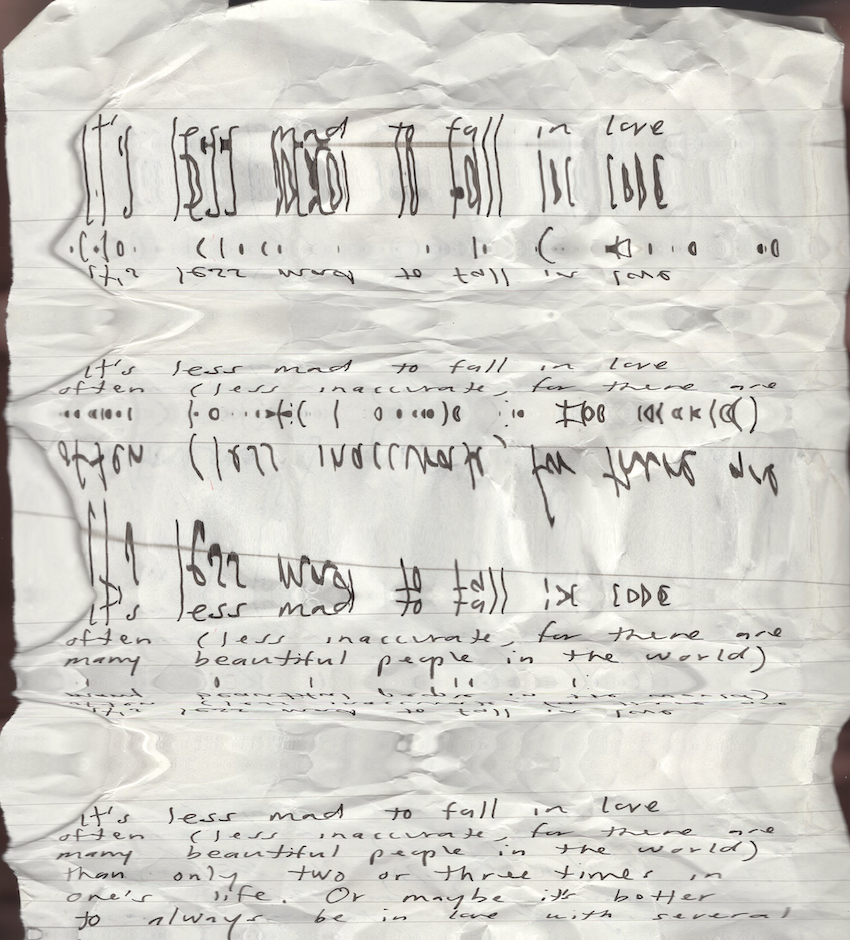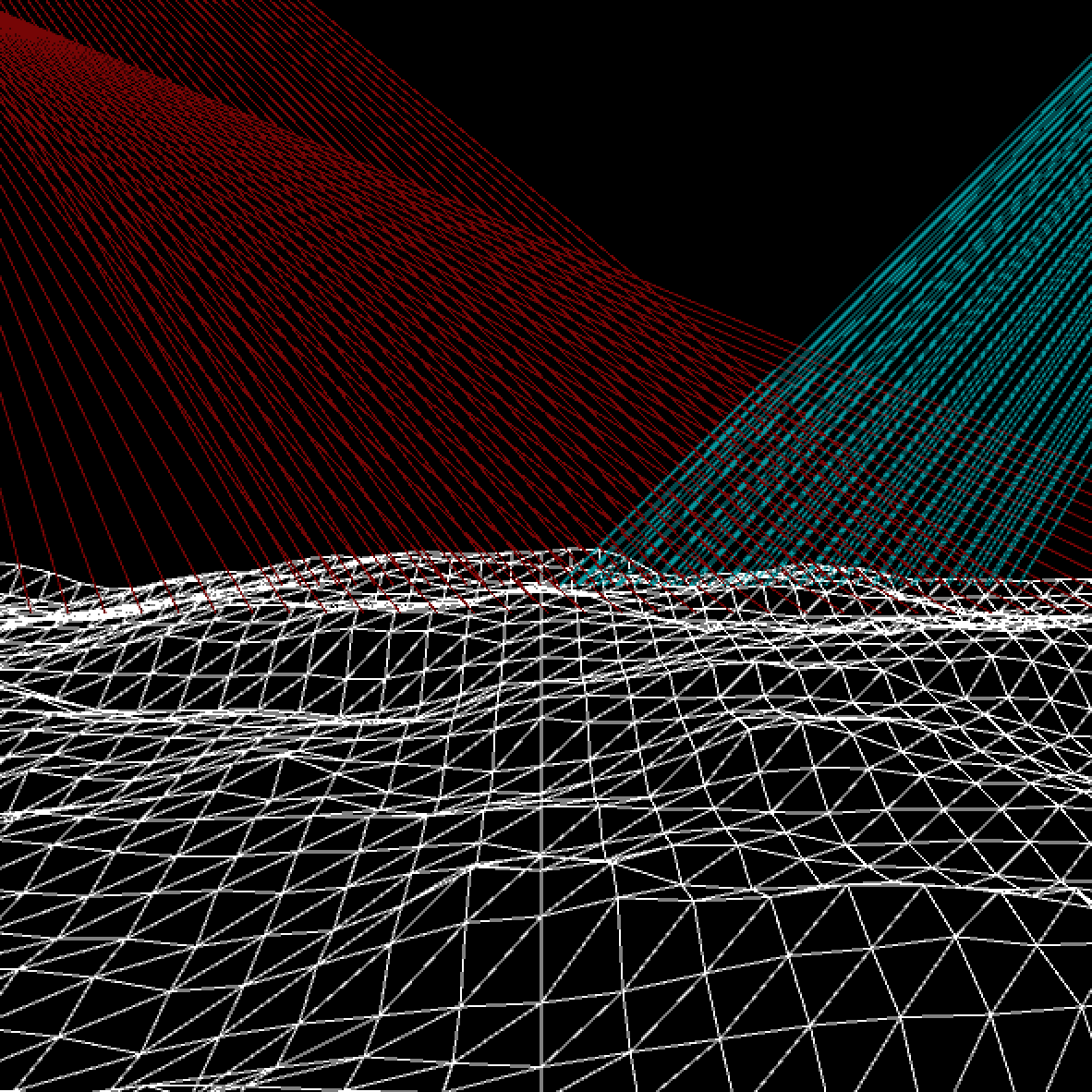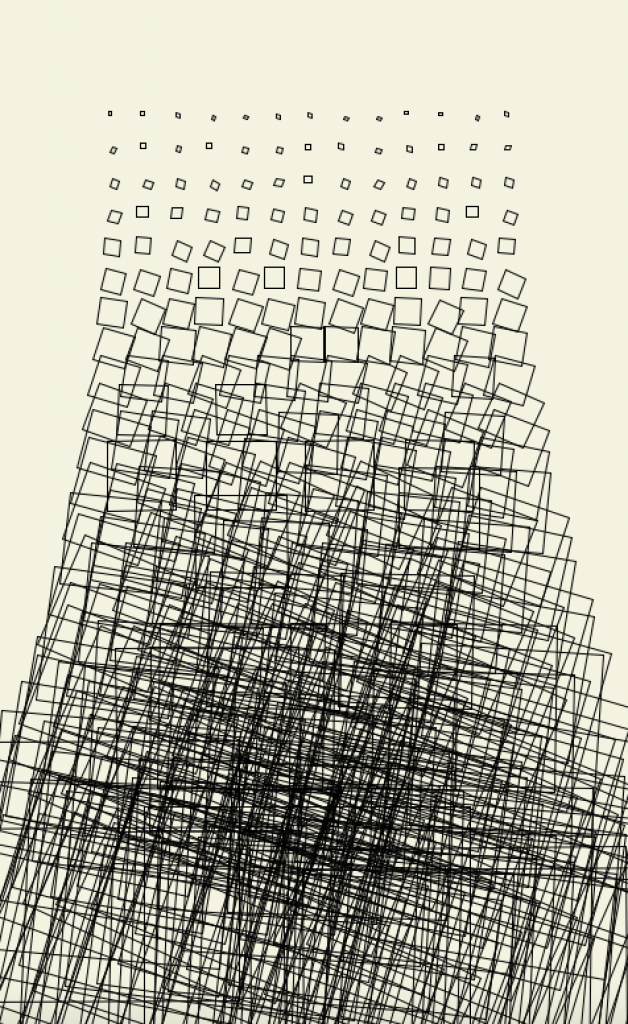
first version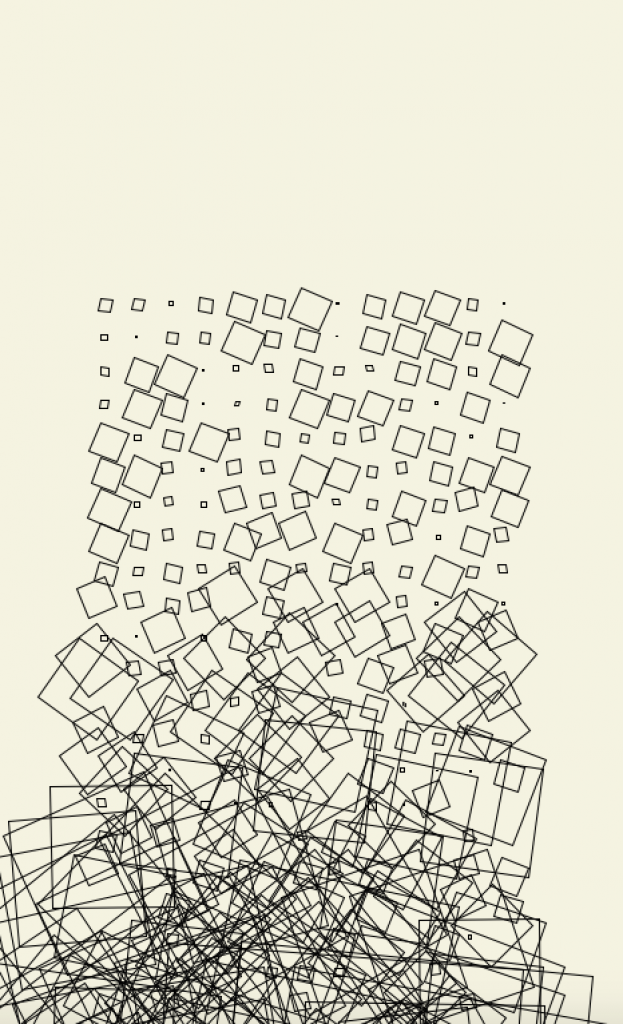
second version 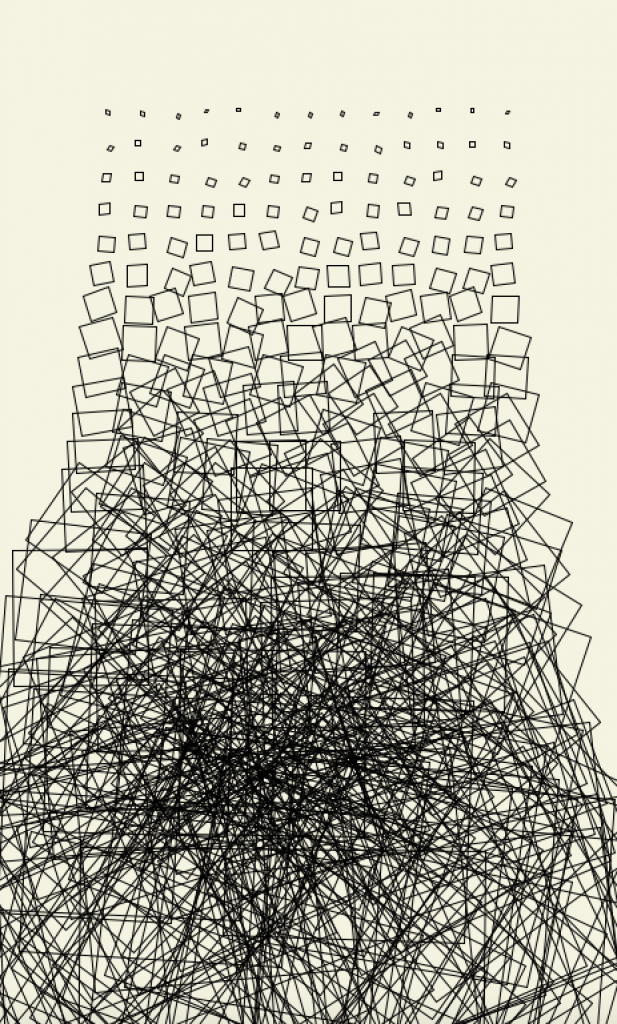
third version
When I initially started the Georg Nees project, I didn’t expect to find myself quite so emerged in the process. However, that quickly changed as I began experimenting and exploring the different ways to make abstractions. Watching the video from the art exhibit Cybernetic Security was also pretty inspiring as well. The context that the exhibit provided around computer art makes it feel much more like art than the production of math.
Most of my influence came directly from Nees’ work titled Schotter (also known as Gravel). Although it seemed too computational to me at first, I realized that the more I looked at the piece the more I saw the art in it. The idea of breaking a uniformed pattern is fascinating, yet it becomes more complex when computers are included. When I think of computer art, I think of something that looks perfectly symmetrical and even, which is why I don’t associate computers with art. However, Nees used the computer to disrupt the consistency of the squares. In creating my own work, I wanted to emulate that same idea, but make it more chaotic.
The code I used for a base was taken from the coding we did in class. Instead of trying to make the boxes look as if they were falling down, I instead decided to make them look as though they were scrambling together. I achieved this by creating a matrix and then adding small random rotations to the squares. Additionally, I changed the parameters of the code to make the number of squares build up as they got closer to the bottom. While I liked the effect of the squares all compiling into a mess of scribbles, something about the result still looked too rigid and stiff.
In the second version, I decided to play with the parameters of the cell size of the squares. I added a random value to the cell size in order to make the larger squares appear more frequently throughout. I also added more rotation by increasing the values of radians, as well as making the values negative and positive so the squares wouldn’t all rotate in the same direction. However, making the cell size larger and more random seemed to make the image as a whole feel even more blocky and uniform, in my opinion anyway. That was the exact thing I wanted to escape. Thus, in my last version, I added as much randomness as I could to make it feel more muddied.
I took away the random function in the cell size and added more of it to the rotation instead. To make the rotations more varied I increased the values that were used in the initial floats. Due to the fact that there was more randomness in the rotation, it created more depth and chaos. I admire the quality that the scribbles add because scribbling feels random and unpredictable, which is why I associate it with human-made art more. As I know now though, computers can be programmed to imitate certain qualities of man-made art.
After completing this project, I’ve realized that art can be made by my computers. I merely look at a computer as a medium, and the human who programs it is still the artist. Of course, it’s nothing like studio art, but I would argue that studio art varies greatly in each of its niches. Photography is not the same as painting, but both are still forms of art. Therefore, computer art isn’t as nearly separate as we think it is.
